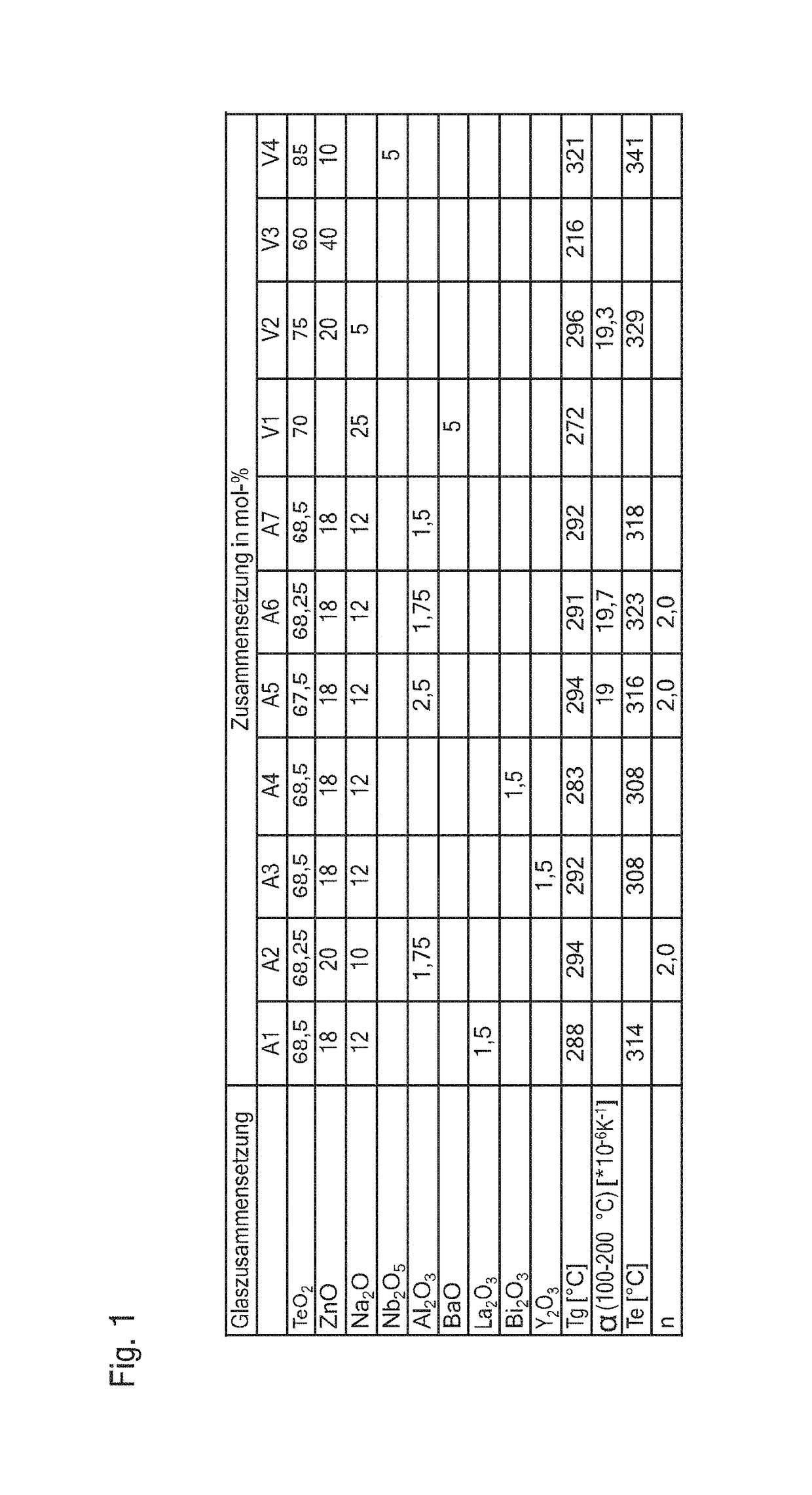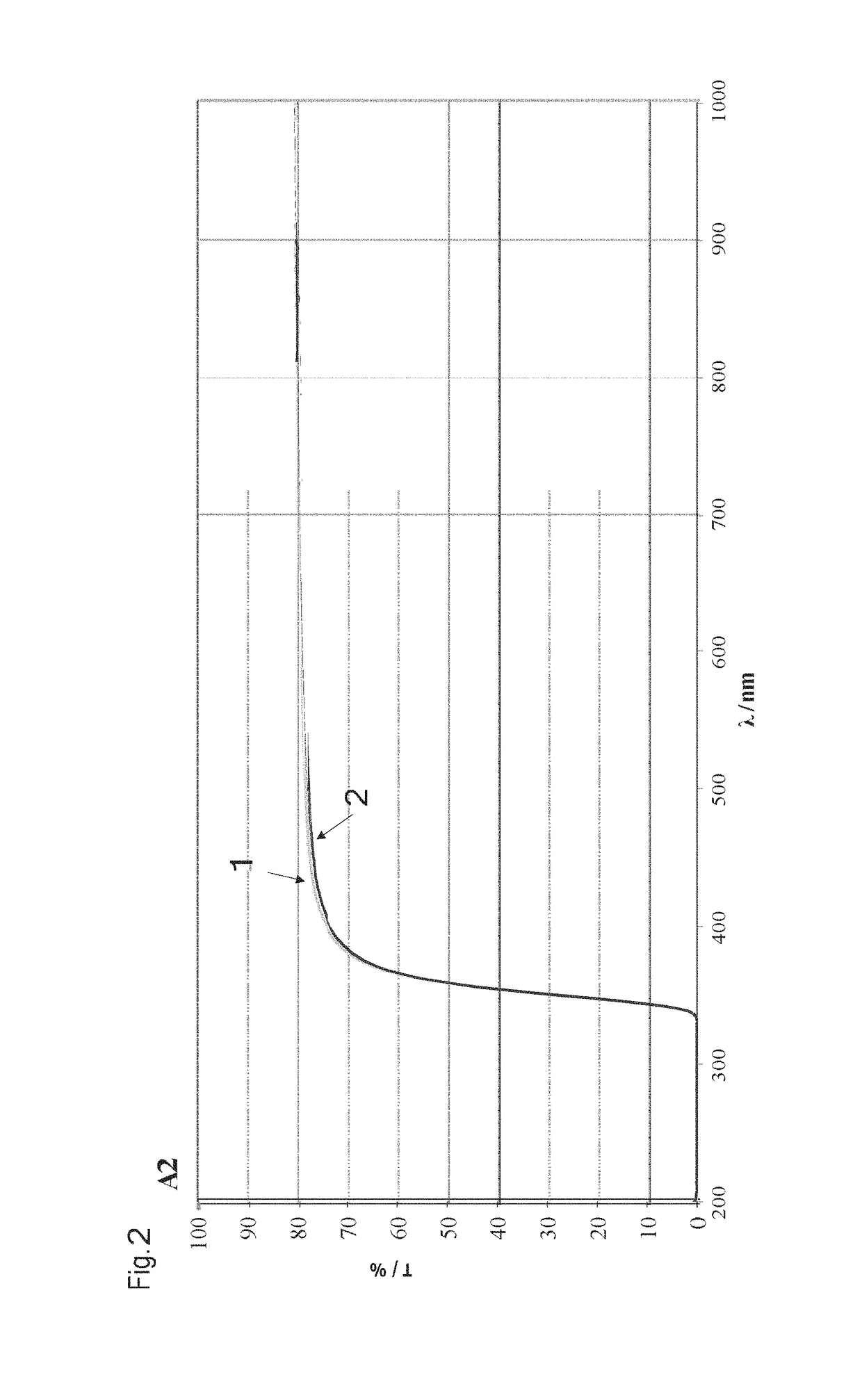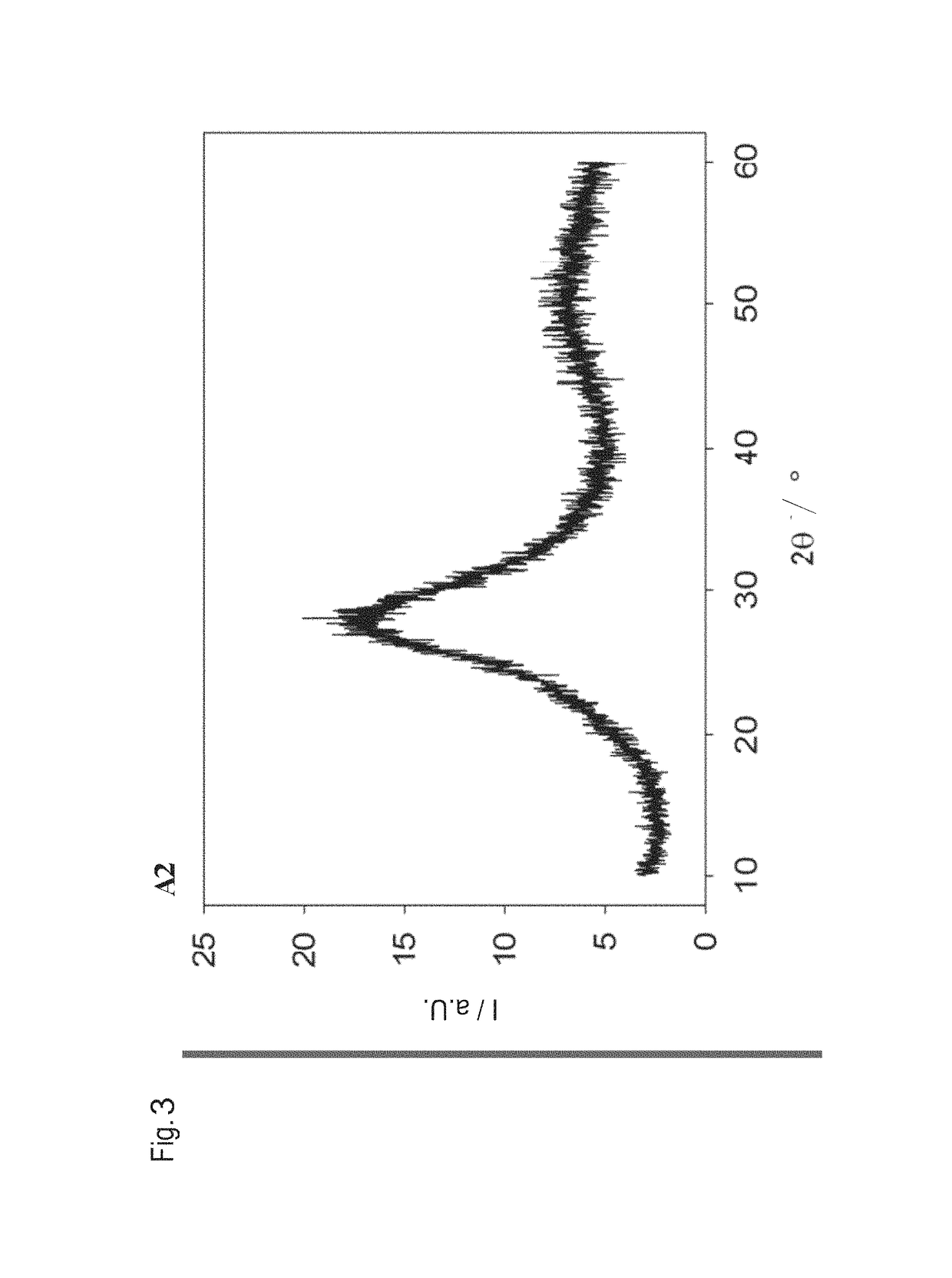Glass composition, component, and method for producing a component
a glass composition and component technology, applied in the direction of solid-state devices, layered products, chemistry apparatus and processes, etc., can solve the problems of low level of chemical stability, unsuitable for many applications, and inability to produce glass solders, so as to improve crystallization stability, improve chemical and physical properties, and improve corrosion stability
- Summary
- Abstract
- Description
- Claims
- Application Information
AI Technical Summary
Benefits of technology
Problems solved by technology
Method used
Image
Examples
Embodiment Construction
[0096]FIG. 1 shows embodiments A1 to A7 of a glass composition, in table form. Furthermore, the table shows comparative examples V1 to V4 of conventional glass compositions. The values given in the table include a maximum error of 5%. The glass compositions of exemplified embodiments A1 to A7 comprise tellurium oxide. In particular, tellurium oxide is TeO2. The proportion of tellurium oxide in A1 to A7 is between 67 mol. % and 69 mol. %. In particular, the proportion of tellurium oxide is between 67.5 mol. % and 68.5 mol. %.
[0097]The glass composition further comprises R1O as a zinc oxide. The proportion of zinc oxide is between 18 mol. % and 20 mol. % inclusive.
[0098]The glass composition further comprises M12O in the form of disodium oxide. The proportion of disodium oxide in the glass composition is between 10 mol. % and 12 mol. % inclusive.
[0099]Furthermore, the glass composition comprises an oxide of a trivalent metal, such as, for example, aluminum trioxide, lanthanum trioxide...
PUM
| Property | Measurement | Unit |
|---|---|---|
| dilatometric softening temperature | aaaaa | aaaaa |
| glass transition temperature | aaaaa | aaaaa |
| wavelength range | aaaaa | aaaaa |
Abstract
Description
Claims
Application Information
 Login to View More
Login to View More - R&D
- Intellectual Property
- Life Sciences
- Materials
- Tech Scout
- Unparalleled Data Quality
- Higher Quality Content
- 60% Fewer Hallucinations
Browse by: Latest US Patents, China's latest patents, Technical Efficacy Thesaurus, Application Domain, Technology Topic, Popular Technical Reports.
© 2025 PatSnap. All rights reserved.Legal|Privacy policy|Modern Slavery Act Transparency Statement|Sitemap|About US| Contact US: help@patsnap.com



